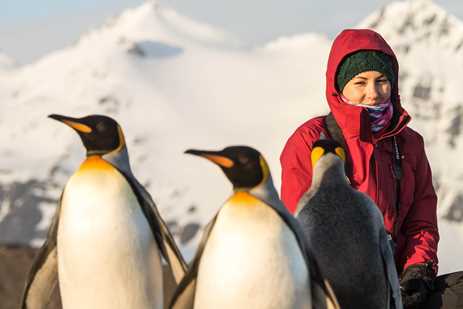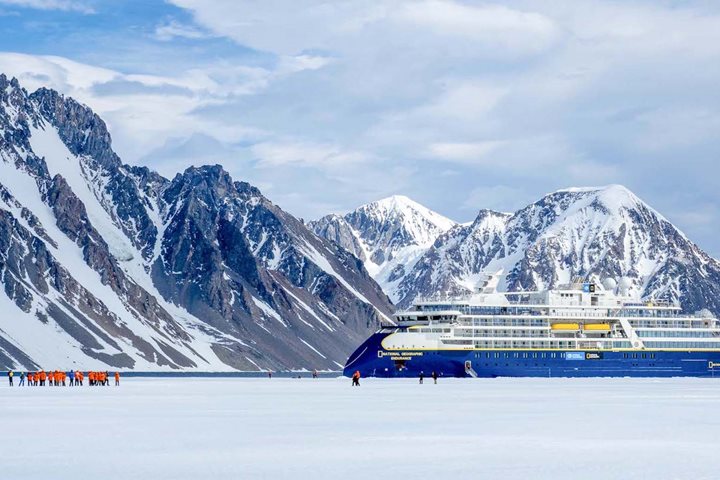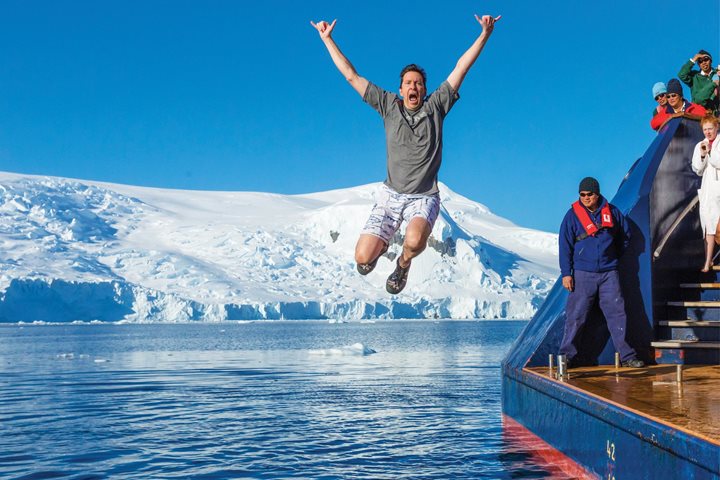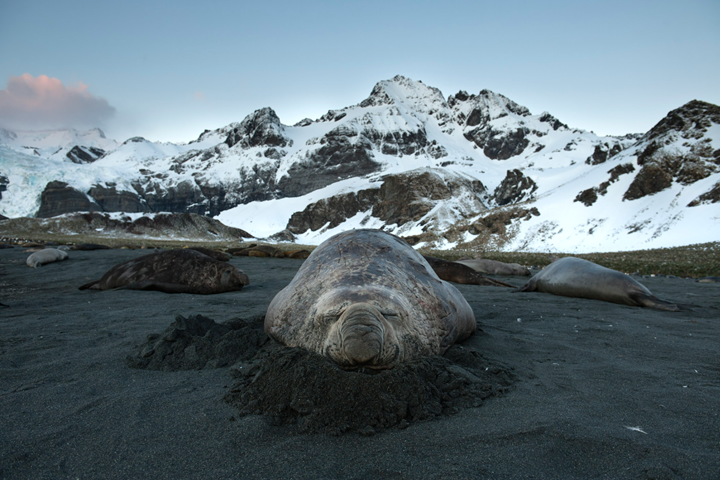When you are hiking you have to walk for quite some time to change your perspective like that, but being on this incredible ship moving among the landscapes, the hard work of getting a different perspective was being done for me, and in a very short amount of time.”

"Meals were another interesting part of the trip for me,” Studer says. “I found myself bringing my camera with me to the table as I would constantly see something new outside the window that I would want to shoot. One morning in particular, I could see the gentoo penguins porpoising in the water outside of our ship. Essentially, they would dive down deep into the water and when they come back up, they jump out of the water, higher than I thought they would."
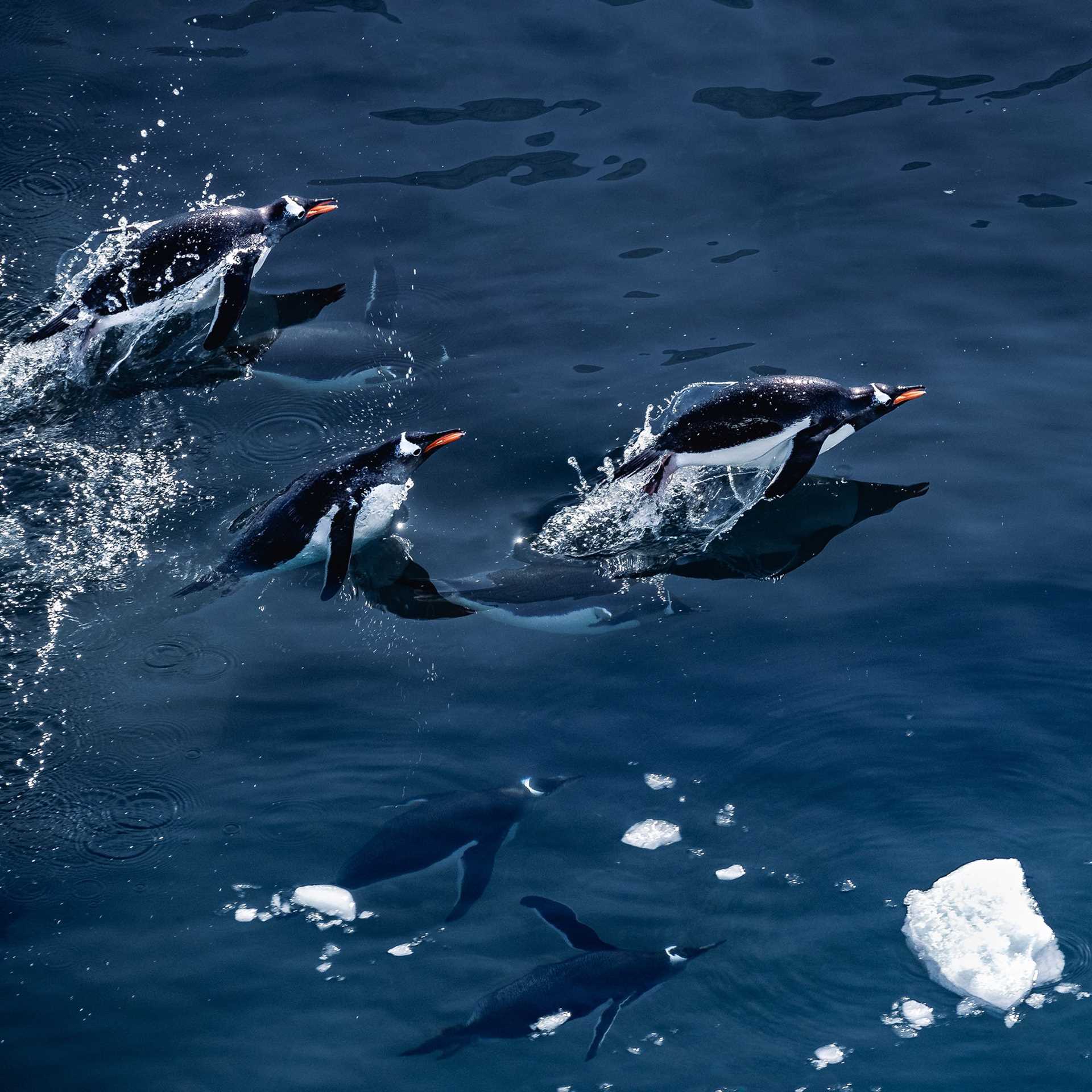
"It took some studying of their behavior before I was able to follow small groups and get some great shots of them coming out of the water. It was another reminder about how many photographic possibilities existed from the comfort of the ship."
This Antarctica expedition was planned with the total solar eclipse on December 4, 2021 in mind. During the eclipse, the National Geographic Endurance would be transiting from South Georgia Island to the Falkland Islands. Not being locked into a specific location allowed the Captain to change course as needed, as the weather is always a factor in this rugged region.
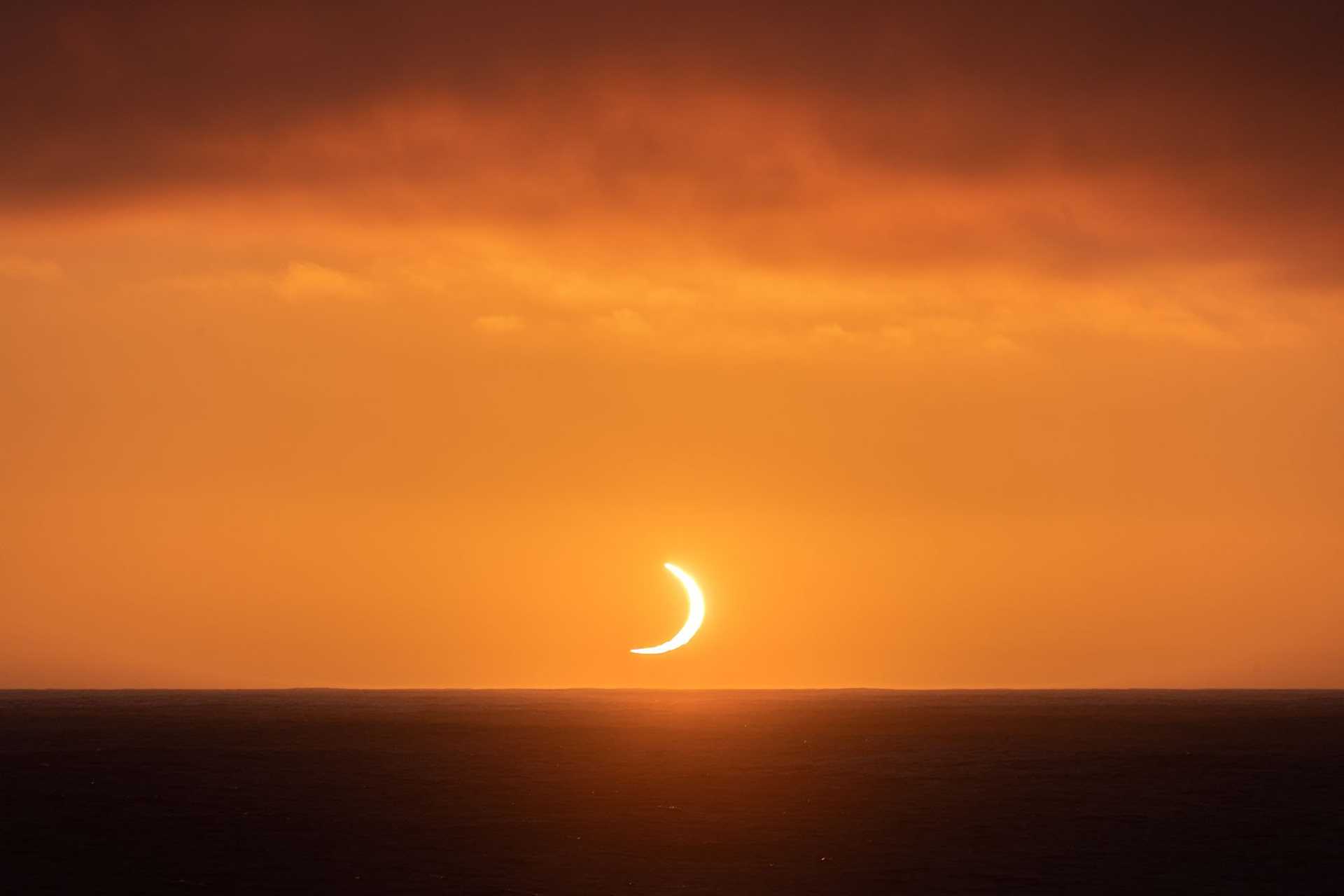
As noted by Naturalist Joe Holliday in the Daily Expedition Report, even with all of the planning, the Antarctic weather is always fighting back.
“We had our hopes up because of the clear sky at dawn. However, a cloud bank approached us, threatening our hopes for a view of the eclipse at sunrise. The ship turned around and started cruising away from the clouds. Then it happened: the sun rose at sunrise during the total solar eclipse!"
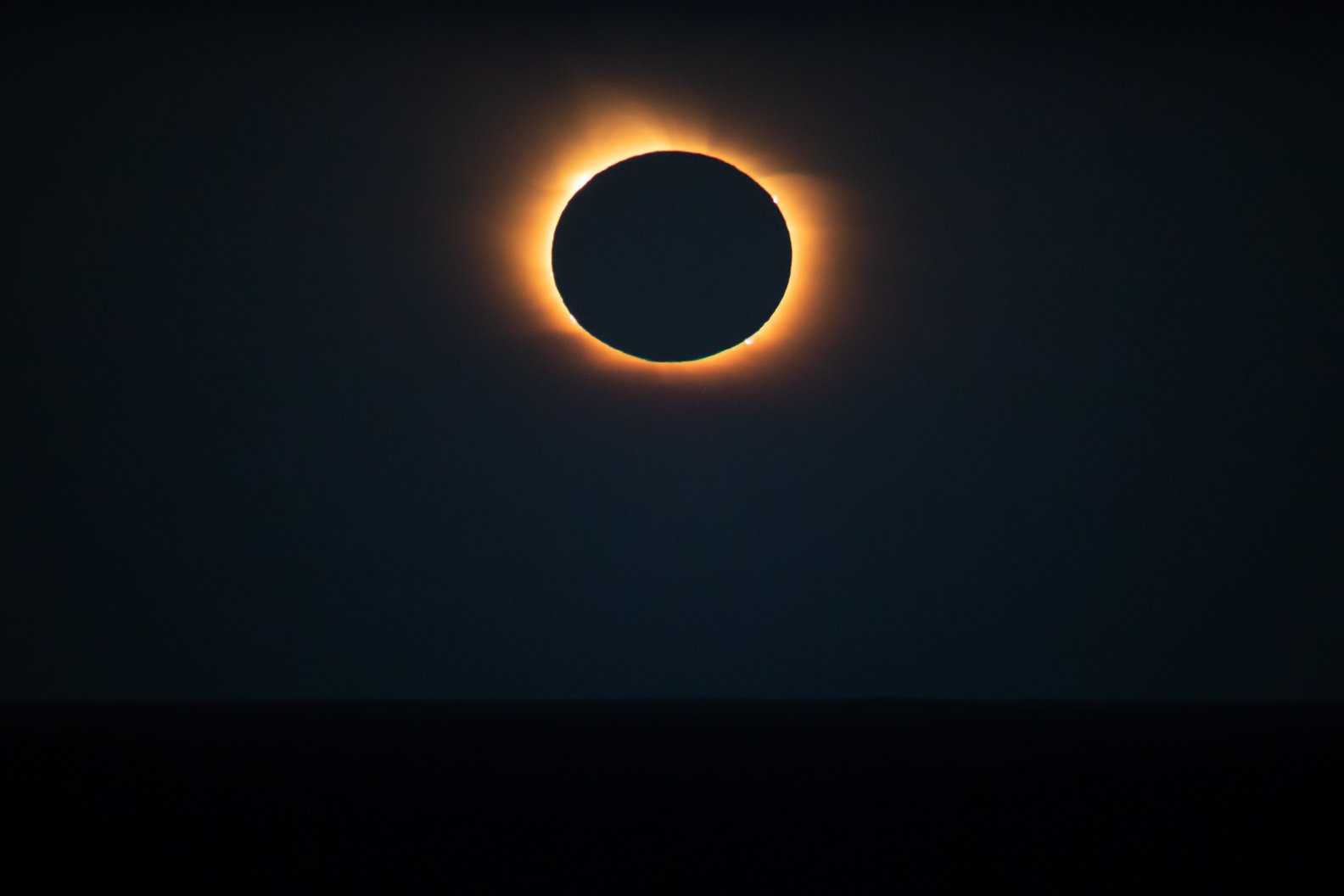
After leaving the Peninsula behind, the ship set course for South Georgia, a large, mountainous island that lies about halfway between the southeast coastline of Argentina and Antarctica, but 1,200 miles to the east. This far distance means that the island has a very different climate and landscape than what Studer and the passengers on National Geographic Endurance had experienced thus far.
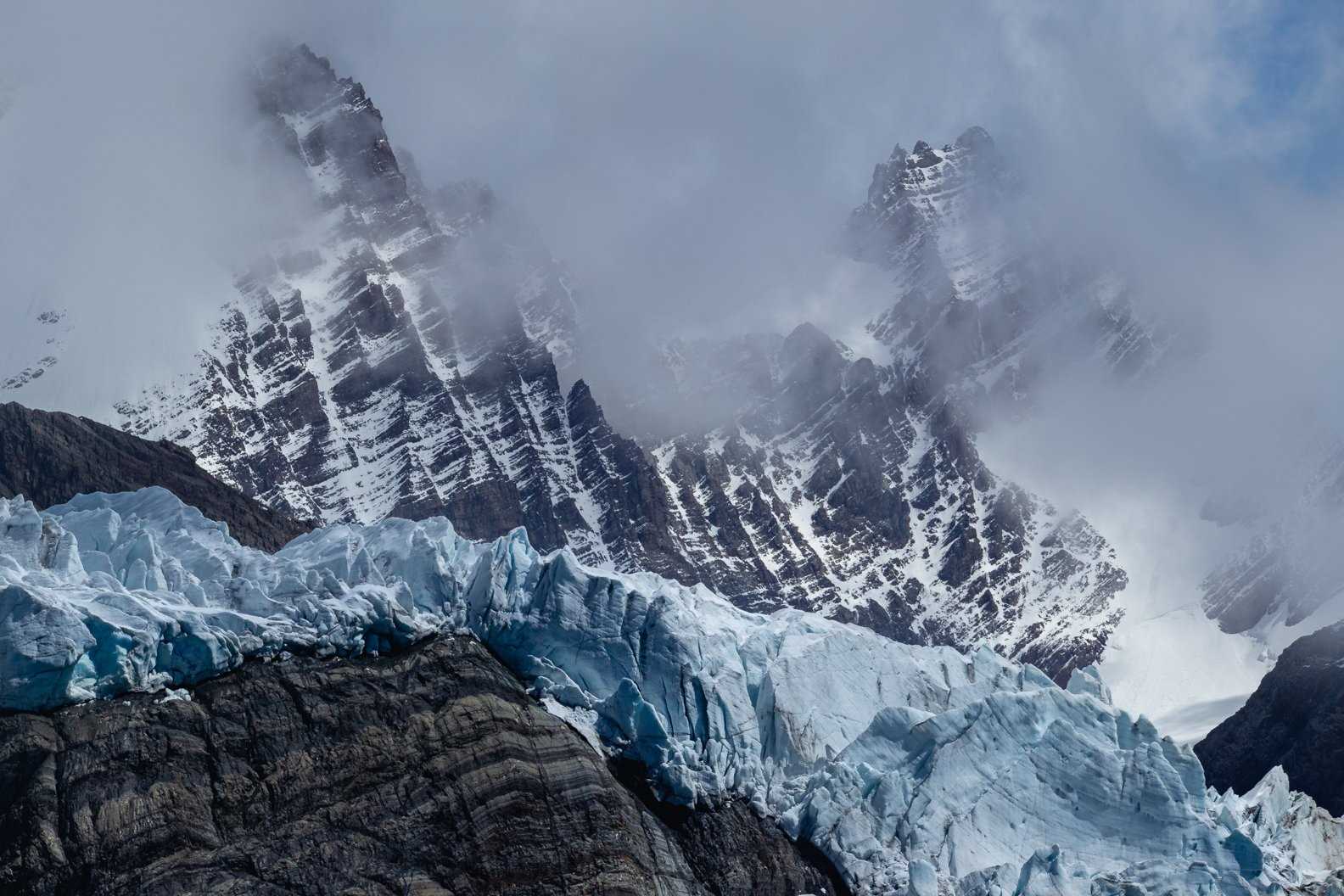
“I wasn’t really sure what to expect at South Georgia Island,” Studer explains. “But over the three-day period we were there, I was blown away. The wildlife consisting of king penguins, elephant seals, and Antarctic fur seals was everywhere, and the landscape backdrops were stunning. It was inspiring to see these mountains seemingly meet the ocean. We got some sunny days here as well, which led to some interesting photos which showed the cold, snow-capped mountain peaks with clean sunlight on the wildlife in the foreground."
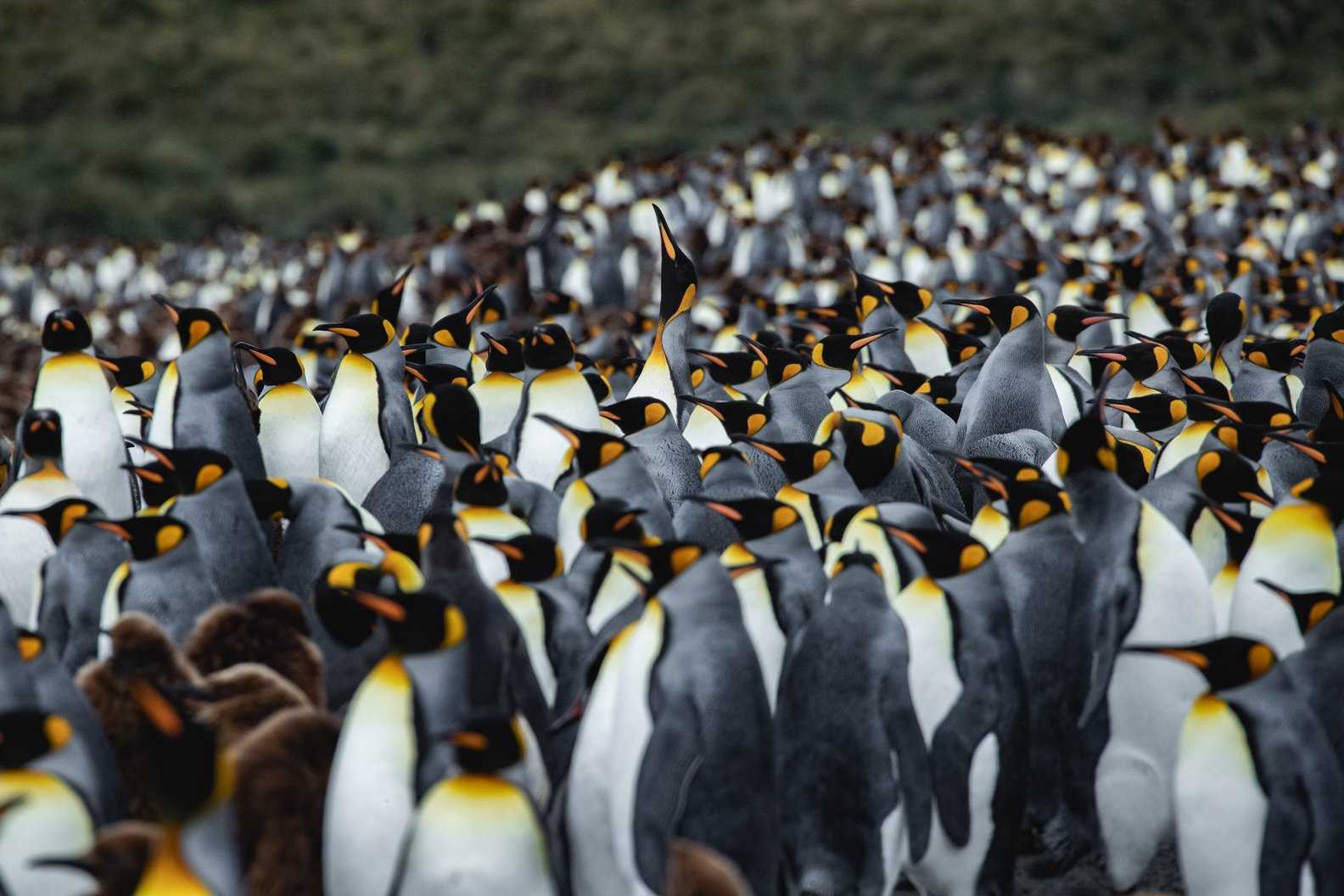
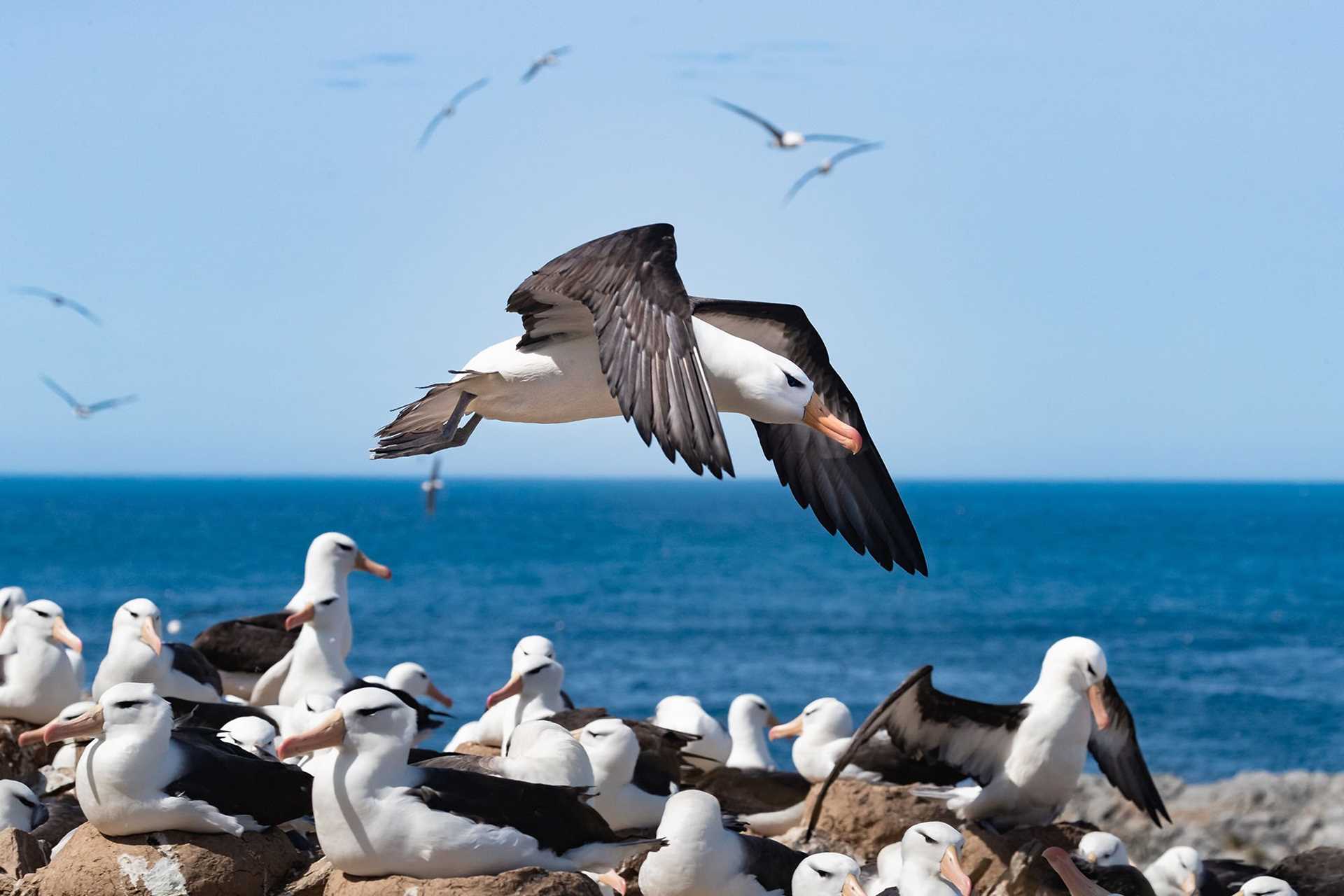
“I went with Lindblad Expeditions to see the total eclipse in Antarctica. But I came back with so many images that mean even more to me than the eclipse,” Studer concludes. “We had so many ‘eclipse worthy’ moments. That feeling of photographing something so unique and rare followed me for the entire three-week expedition. I had that feeling when I saw the massive colony of King penguins on the beach in South Georgia, or every time I laid eyes on the incredible mountain and glacier landscapes of Antarctica.

In South Georgia, we had this incredible ribbon of lenticular clouds catching this gorgeous orange light over the mountains below. It was all of these ‘eclipse like’ feelings that made for an exciting and rewarding photography experience that I will never forget. My only hope is that this won’t be my last expedition to Antarctica, and that thanks to conservation efforts, the untouched beauty will remain on my return with Lindblad Expeditions and National Geographic.”
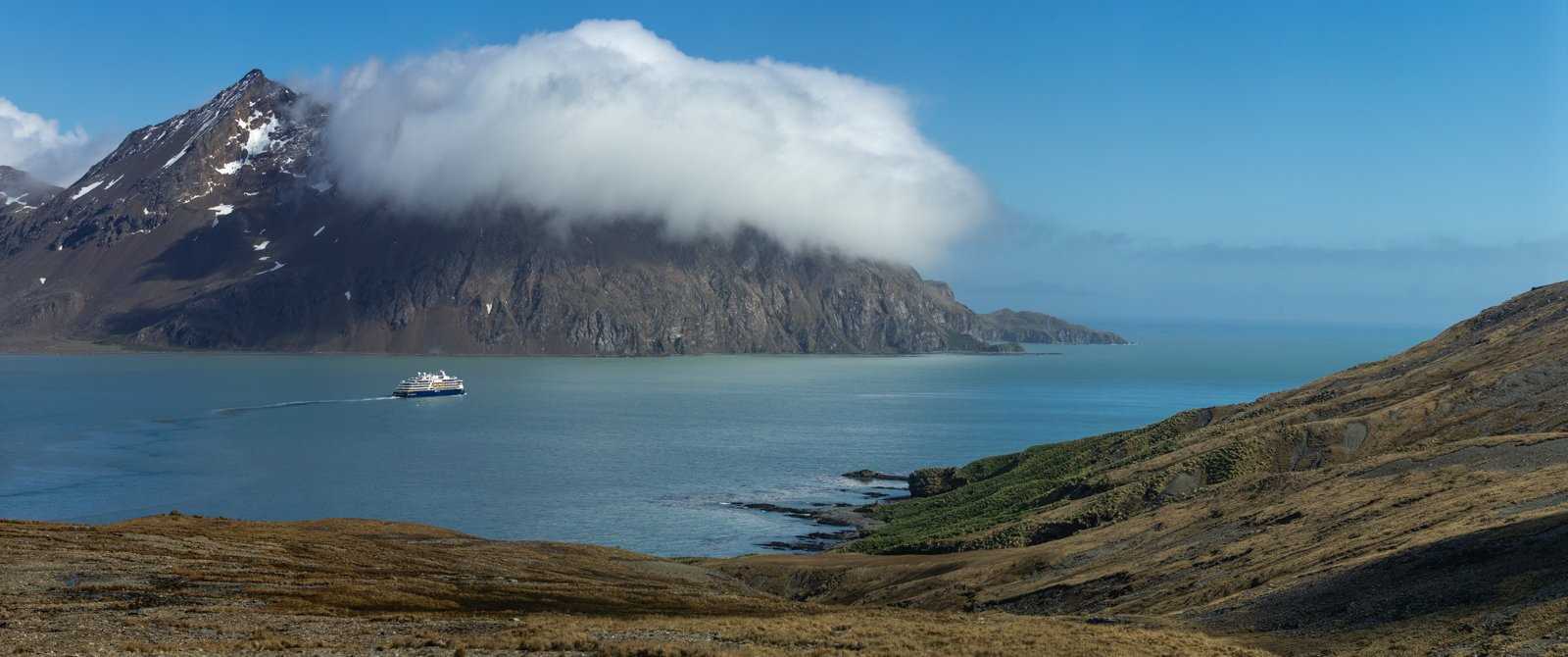
See more of Andrew Studer's work at andrewstuder.com and on petapixel.com.




